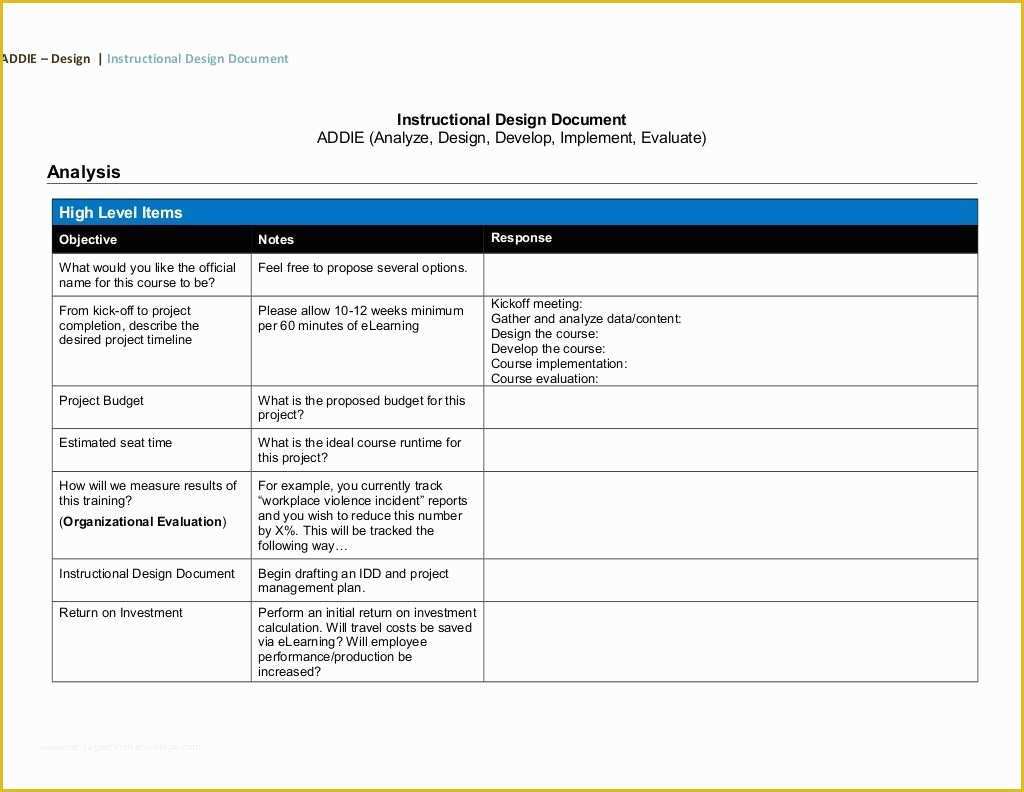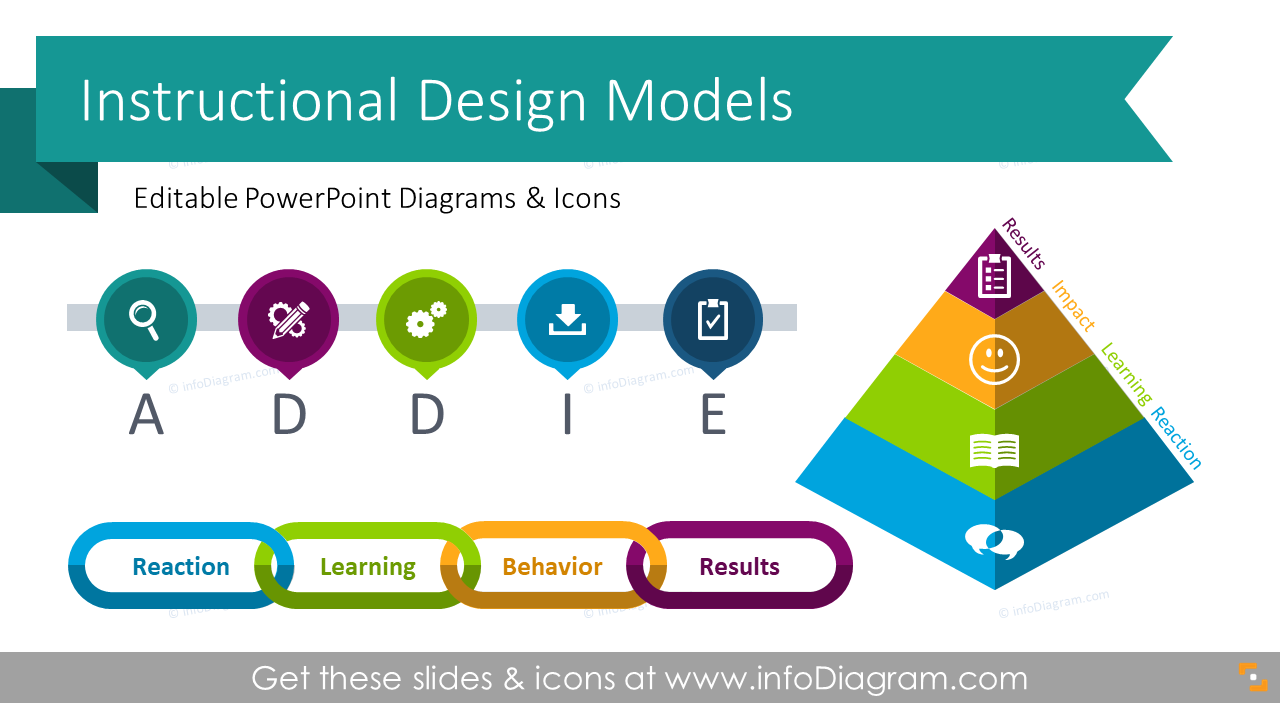Table Of Content

Outside of these requirements, 44.6% look for applicants with a bachelor’s degree. And only 11.9% look for instructional designers with a professional-level certificate. The ADDIE model is a fairly simple way to think about planning and delivering a learning initiative or program.
Instructional Designer

I learned a lot about the field and made some great connections, but some of the classes weren’t up-to-date, and I had to do a lot of work outside of the classroom to create a competitive portfolio. The Development phase is where you actually begin creating or developing, your eLearning course. The finished analysis should become the heart and soul of your eLearning course. You’ll use this analysis as you move through the next phases in the ADDIE process. The waterfall nature of the ADDIE model also has some disadvantages.
How Long Does It Take to Develop Training? New Question, New Answers - ATD
How Long Does It Take to Develop Training? New Question, New Answers.
Posted: Wed, 13 Jan 2021 08:00:00 GMT [source]
Explore more content
Instructional design models are essential for creating effective learning experiences for students or trainees. An instructional design model is a framework that provides a systematic approach to the design, development, and delivery of educational content. It helps educators and instructional designers ensure that the learning experience meets the objectives of the course or training program. Instructional design models are frameworks that help instructional designers and educators create effective learning experiences.
Including Confidential Projects in your Portfolio
The Learning Guild, ATD, TLDC, Training Magazine Network, and LDA all provide both free and paid resources for instructional designers and other learning and development professionals. However, choosing the right instructional design model for your project depends on several factors, including the learning objectives, the target audience, and the delivery method. The ADDIE model may not be suitable for all projects and may require a significant investment of time and resources. The Kirkpatrick model of training evaluation is a four-step process used to understand how a training is performing and whether learning goals are being met. DevelopmentThe development phase of the ADDIE model is where instructional designers develop the content and learning interactions outlined in the design phase. During this phase, content is written and graphics, audio, and photography are also produced and assembled.
Ensure that you have the necessary resources, including technology and personnel, to implement the model effectively. In 2012 Google decided to analyse their teams to discover what makes an effective team, why some teams are so successful, and some less so. In this online seminar, we explore the thorny issue of managing the demands on our time. In many workplaces it feels like there's a potentially infinite amount of work. To succeed, we need to learn to prioritize, say no when appropriate and manage our own boundaries.
Instructional Design Is a Vital Capability for TD Professionals - ATD
Instructional Design Is a Vital Capability for TD Professionals.
Posted: Wed, 19 Aug 2020 07:00:00 GMT [source]
Explore Technology Topics
Organizations should create a high-level outline of the entire program to structure the learning interventions and specify objectives for each aspect participants receive. To manage, plan, and monitor existing and desired skills for a role, team, department, project, or an entire company you can use the Skill matrix framework. Learning and development courses must have a clear goal matching the audience’s skills and intelligence to succeed. I find it especially important to use Kolb’s learning cycle when training on communication skills, emotional intelligence, or other topics such as facilitators training, or sustainability.
ADDIE vs. SAM – Which model best suits you?
This instructional design methodology helps to deliver more effective training and instruction, with each phase directly setting up the next. However, while the waterfall approach worked well for designing specific job tasks, the ADDIE framework was a little too static to apply for all situations. The first step of the ADDIE model is setting goals for the new program and researching the intended target audience. This includes the audience’s existing knowledge and skills, future training needs, and the appropriate training environment and methods that organizations could deploy. The ADDIE model is generic and applicable to any type of learning experience, audience, or industry. The fact that it is not industry-specific has helped ADDIE become one of the most common design models in use.
What Is The ADDIE Model?

Follow us on Twitter and come back to E-Learning Heroes regularly for more helpful advice on everything related to e-learning. This could be as simple as looking at similar courses already in your LMS, gathering usage data, or talking to managers in operations to find out what their needs are. Even spending a short period of time conducting a needs analysis will pay dividends in the end. Having these conversations can be challenging, and I suggest easing into them, asking clarifying questions about the goal of the training, and providing solutions for how to achieve the goal. Regular check-in meetings also help ease the conversation and provide a set time for checking-in on the priority and status of this initiative.
We’ve heard from a business school learning design team that they color-code sections of their courses in a high-level SessionLab outline of the program. Different colors make it immediately evident what is done, what is missing, and where builders and training developers need to do some work. Florida State University initially developed the ADDIE framework in 1975 as part of its instructional theories for military training. From the very first definition, it acknowledged that the rather universal division in steps can be applied to any curriculum development activity. In fact, it’s not different from any step-by-step approach to project design and implementation.
It may not be the model you go to for more technical topics where sharing data and information is the core of your training. This is a template that summarizes how to use Kolb’s learning cycle in the classroom. After the course has been running for a while and completed by a good number of people, you should take time for post training assessments.
As a result, most games are engaging, intriguing, and immersive, while instructional content tends to be boring and perfunctory. Discover key insights into the ADDIE, SAM, and Agile Instructional Design models to select the best framework for your project's success. The effectiveness of any eLearning course is only as good as its instructional design. But can instructional design alone make an eLearning course engaging and effective?
You need to develop a clear understanding of what success and failure will look like for your initiative. You also need to understand how you’ll measure your progress and success, and what your high level approach will be for ensuring that you meet your objectives. You can make use of storyboards to visualize the training and develop prototypes. Throughout the development phase, you’ll need to go through a testing and review process to ensure that everything works — both practically and in alignment with the overall design. This process can be time-consuming, as you must reassess and iterate the instructional solution if you identify any disconnects or inefficiencies.
It’s a more time-consuming process than the SAM model, but it’s a complete cycle focusing on getting it right the first time. With ADDIE, a solution spends more time developing, where designers tweak and perfect the details before launch. More and more instructional designers are asking what games they should use to increase the effectiveness of their training and to engage their target audience.
It was in the mid-1980s that the version similar to the current version appeared. Today, the influence of the ADDIE method can be seen on most ID models being used. The concept of Instructional Design can be traced back to as early as the 1950s. Army by the Centre for Educational Technology at Florida State University, ADDIE was later implemented across all branches of the U.S. A template can also facilitate communication and collaboration within the team, providing a shared reference point for the project’s status and next steps. Measuring reactions to the training may suffice for simpler training.
There are several different means of performing a summative evaluation. It can be helpful to consider another training evaluation model (such as the Kirkpatrick model) when developing a framework for your evaluation. The reality of building and improving a course tends to be incremental and iterative, so expect to move through these different phases at different times for various elements of the course. For example, you may be implementing a new small-group learning activity for one unit, while simultaneously developing a lecture presentation based on student feedback for another unit.

No comments:
Post a Comment